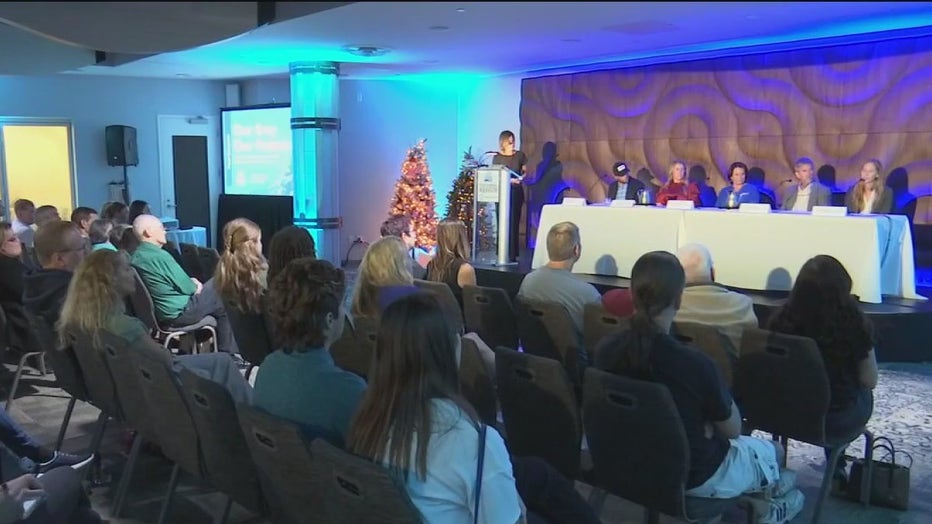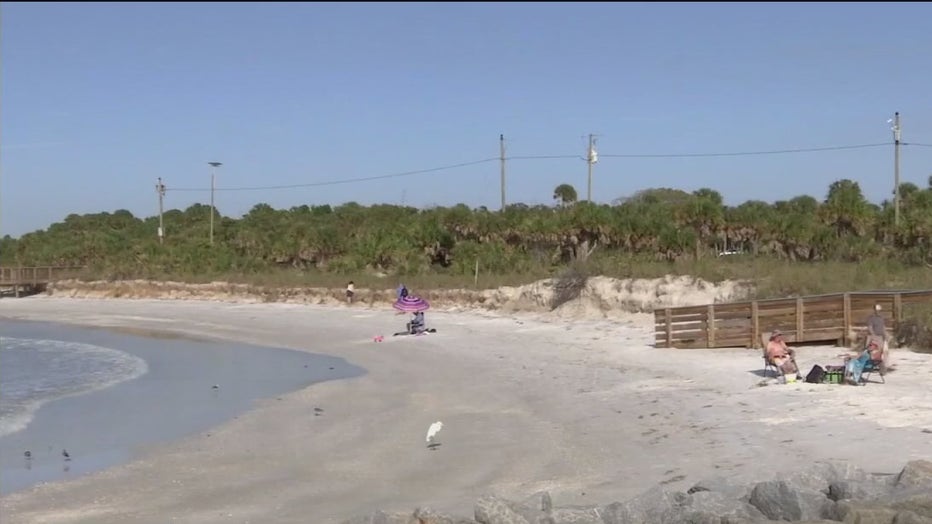Florida Aquarium, Ocean Conservancy team up to talk about solutions to red tide

Searching for solutions to Red tide
Ocean Conservancy and the Florida Aquarium teamed up for "Our Bay, Our Future."
TAMPA, Fla. - The Florida Aquarium is teaming up with Ocean Conservancy to host panel discussions about what red tide is, how it spreads and what needs to be done to prevent it from destroying the gulf and Tampa Bay.
"Red tide is a major issue that is plaguing the bay, it was a major event last year, it’s coming back with a vengeance right now, and we wanted to capitalize on these discussions to talk about red tide and to talk about what we as Tampa Bay residents can do to fix the problem," said J.P. Brooker, the director of Florida Conservation with Ocean Conservancy.

The latest snapshot from the Florida Fish and Wildlife Conservation Commission shows low concentrations off the tip of Fort Desoto. South of there, Bean Point Beach near Anna Maria has medium levels. Off the coast of Sarasota around Bird Key and Lido Key; high levels are noted.
"We need to figure out what some of the non-point sources are for nutrients like nitrogen, and if we can undertake projects that will fingerprint that nitrogen, we can have an impact on taking it out of the water or preventing it from getting into the water to begin with," said Brooker.
The main topic among the panel: What are the solutions?
"Some of the things we can do is, if you live on the water or near the water, or near a sewer drain that drains into a river or stream that goes to the bay, stop using the organic phosphate fertilizers, that goes right into the bay, that also serves as nutrient for your lawn, but it also serves as a nutrient for red tide too, so that’s something we can change right away. There are other alternatives to that," said Dr. Debborah Luke, the senior Vice President of conservation at The Florida Aquarium.

Dr. Luke said work is being done with state lawmakers.
PREVIOUS: Dead fish line Siesta Beach as red tide impacts parts of Sarasota Bay
"Our infrastructure, all the sewage pipes are old, and they’re leaking into the bay and that serves as a nutrient for red tide, so we are working with the legislature to change that infrastructure and update it," Luke said.
Experts said these decisions protect our ways of life and marine life.
"Floridians, especially in Tampa Bay, love to fish, and we’re losing our fisheries resources when we put too many nutrients in the water," said Brooker. "Floridians love manatees, and in the last two years we’ve lost one quarter of the manatee population due to starvation, and that’s something within our control to help turnaround."
Conservationists said Hurricanes Ian and Nicole pushed nutrients into the gulf, which is why we’re seeing higher levels of red tide right now.
Preventing red tide blooms from getting out of control can’t happen overnight, but experts say it’s these types of conversations that need to happen in order for the gulf and bay to stay healthy for the long run.

